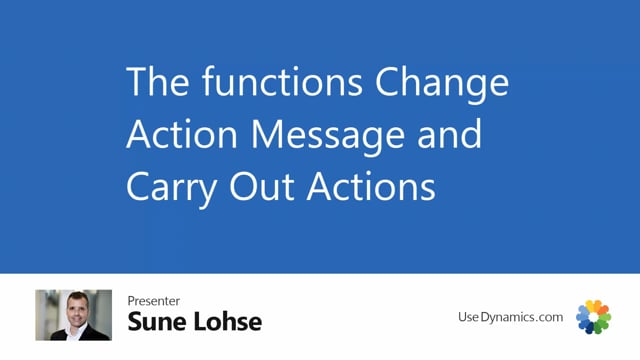
Let’s take a look at the functions to change action message and carry out.
And that will be both from the simple MRP journal, the direct replenishment journal, and the move demand data journal.
If for instance I calculate here on my simple critical items template just to find the items that are normally critical, and I have suggested quantity to order using whatever template here, I can look at my lines, I can change the quantities, change the dates like I want to and when I’m ready to carry out those line for production orders, purchase orders and so on, meaning I want to transfer them into the reverse planning worksheet, I can check mark the action messages manually like this or I can set action message by the set action message.
I can set all of them all within a filter.
So if I’m filtering for instance on a vendor number, I could set some of them and then when I carry out actions, the lines will be moved into the reverse planning journal and it will ask if I want to open the reverse planning worksheet.
So here you can see the lines in the reverse planning worksheet that I just created.
So the function to if you’re back in the simple MRP, the carry out action is actually just moving it into the reverse planning worksheet, whereas if you open the reverse planning worksheet and you have the same logic to set or remove action messages and to carry out action messages, but from here when you carry out, it will, like the standard Business Central, create production orders, assembly order, purchase orders and transfer order.
That’s the purpose from in here.
So this is the last place you want to handle and bundle the orders before carrying out.

